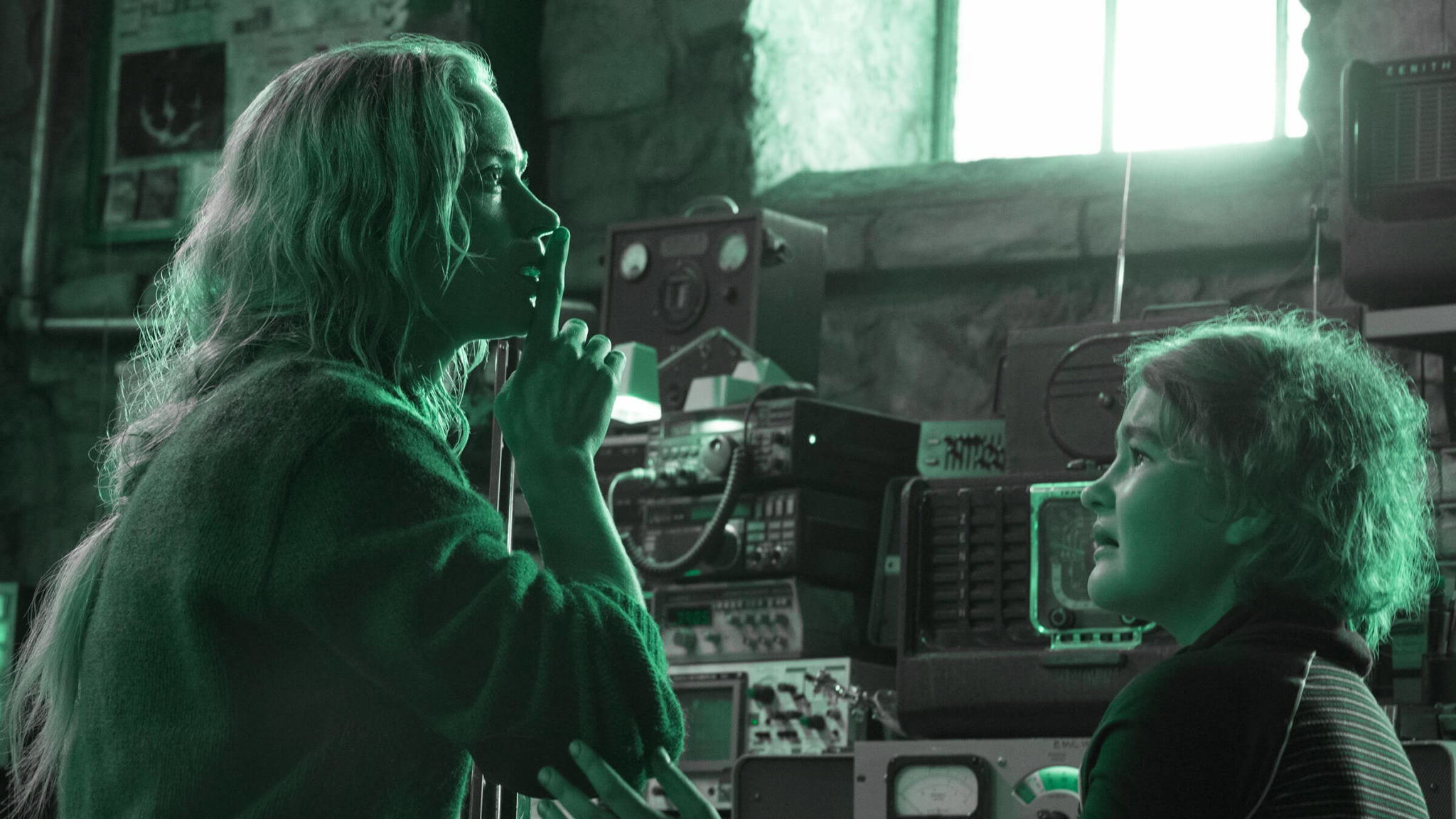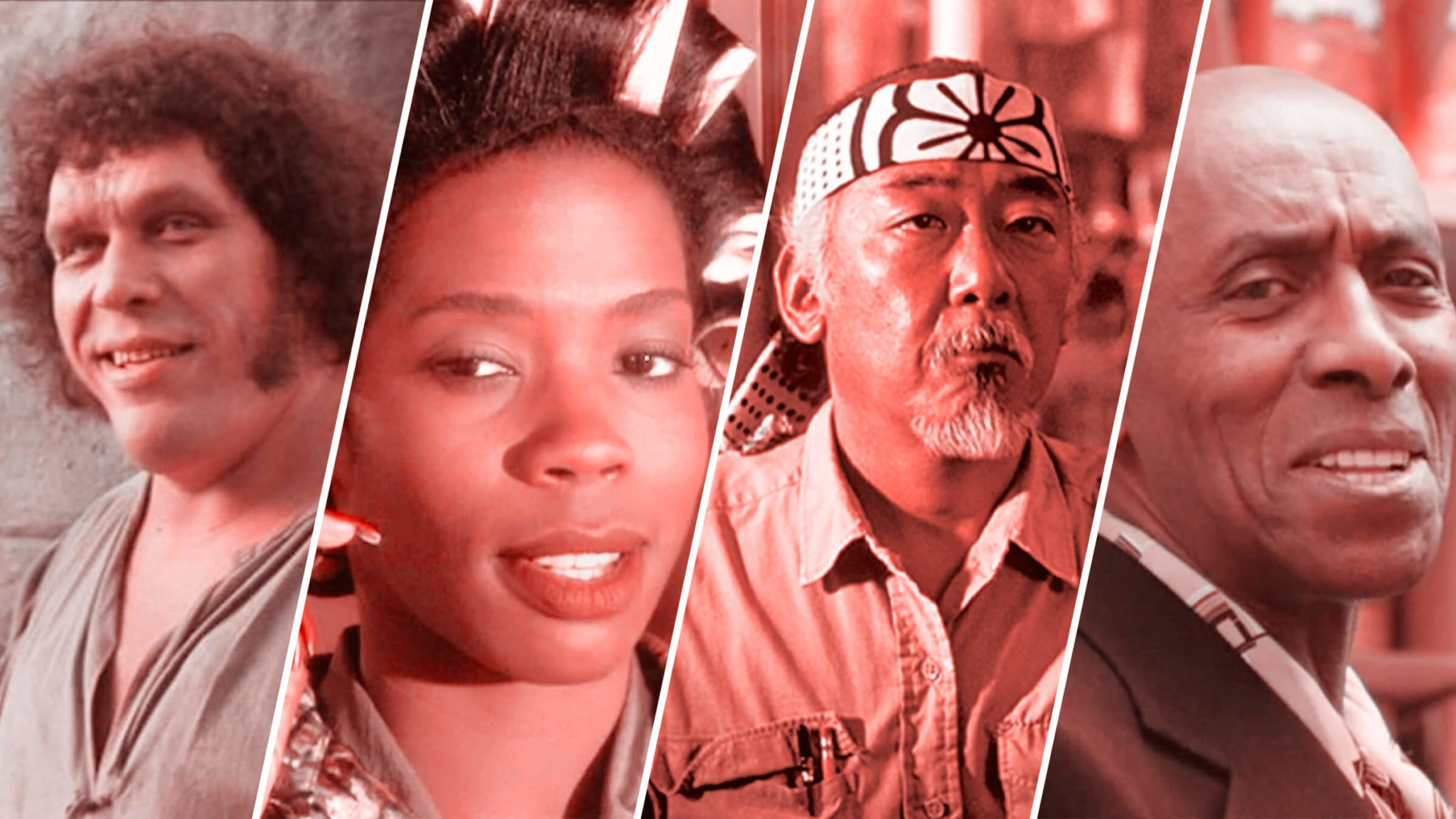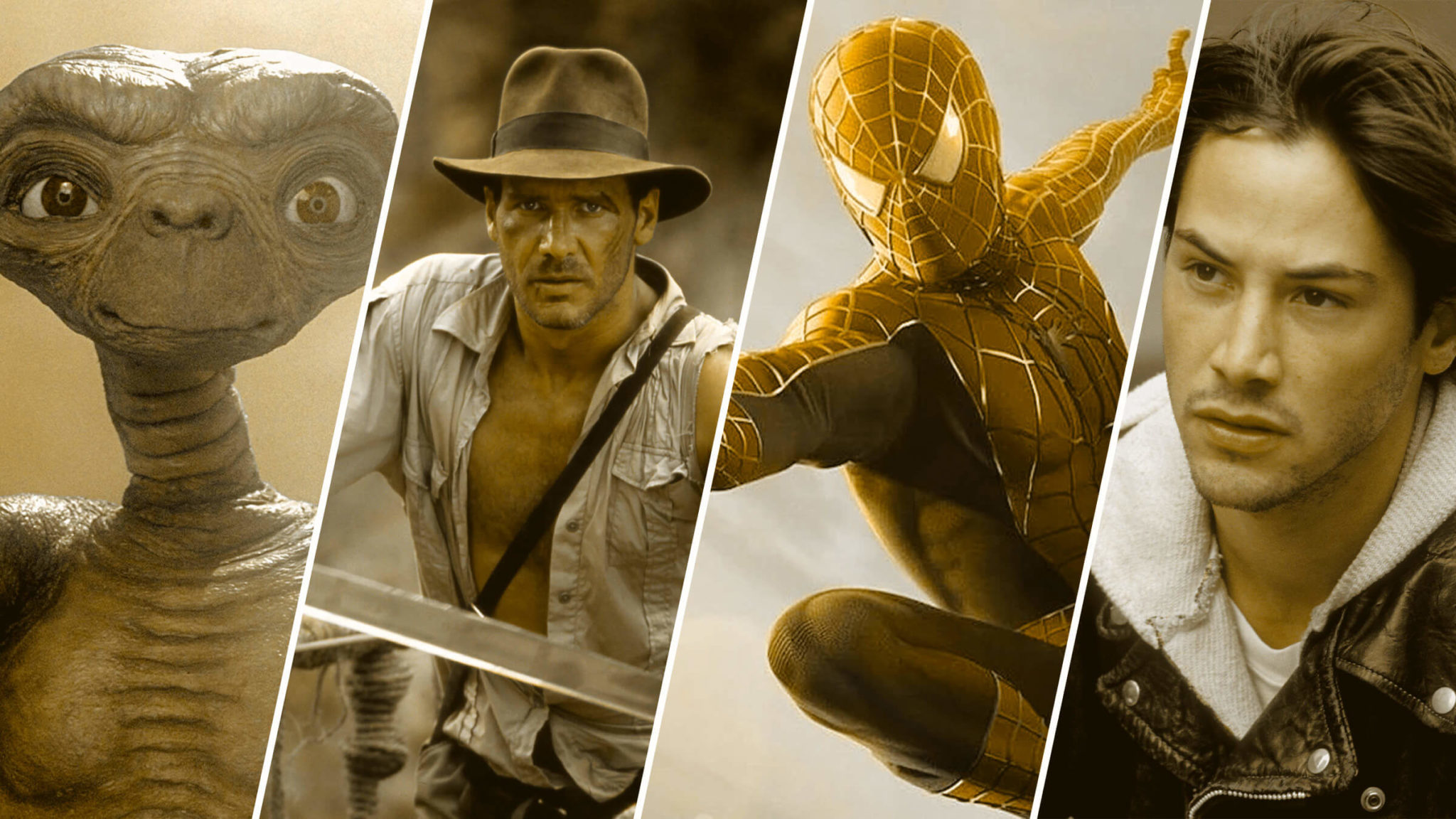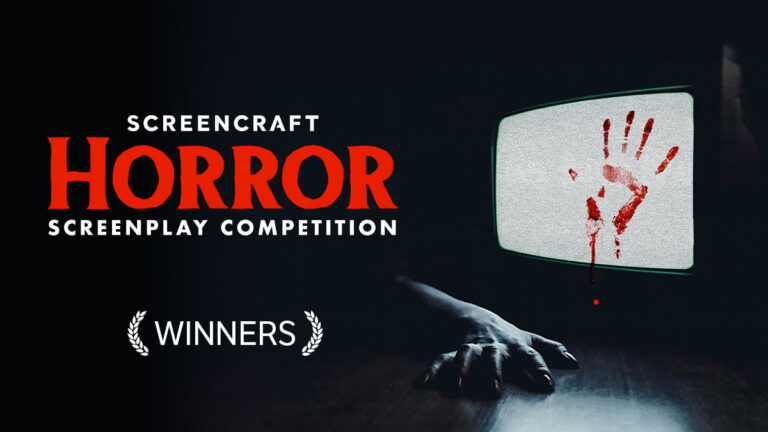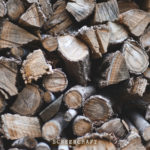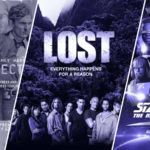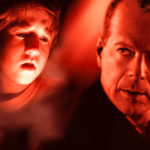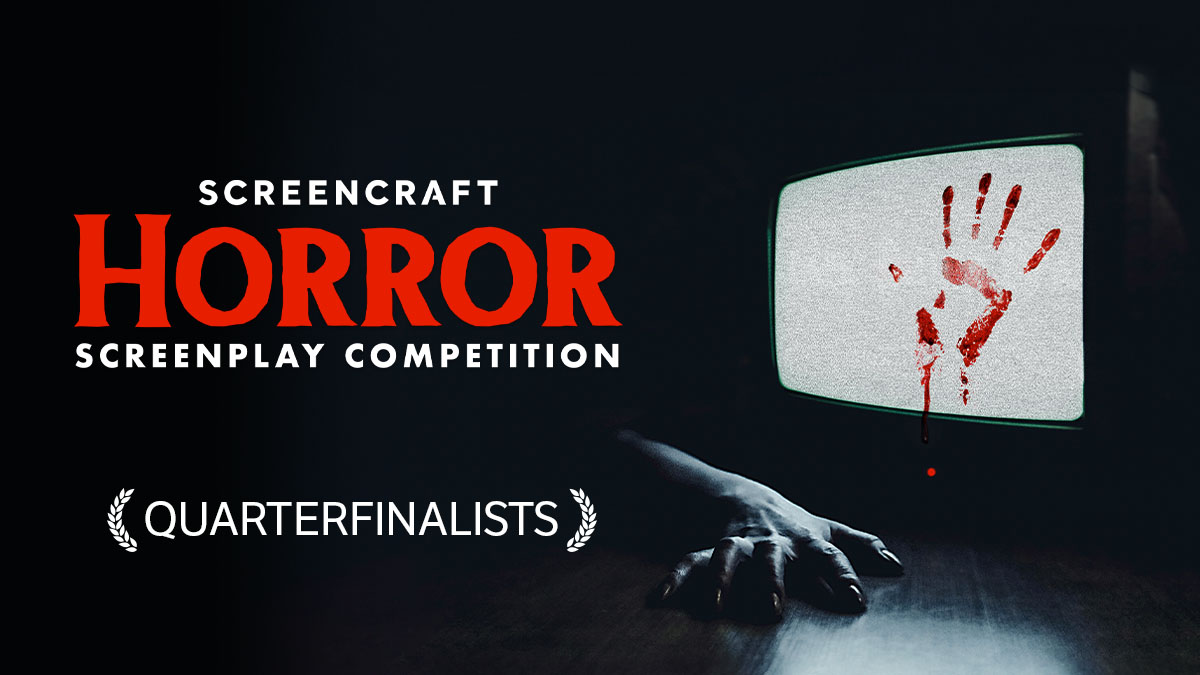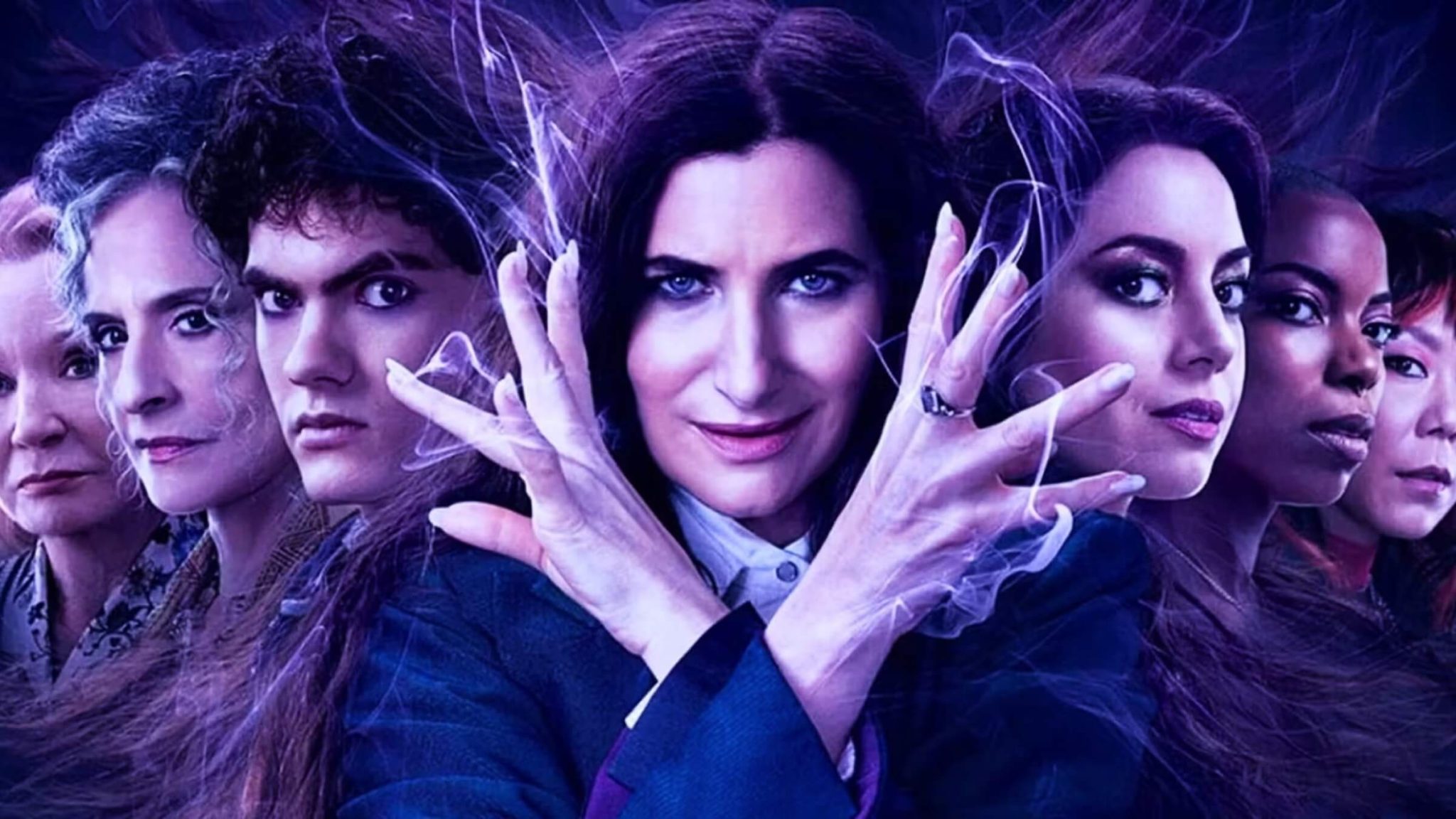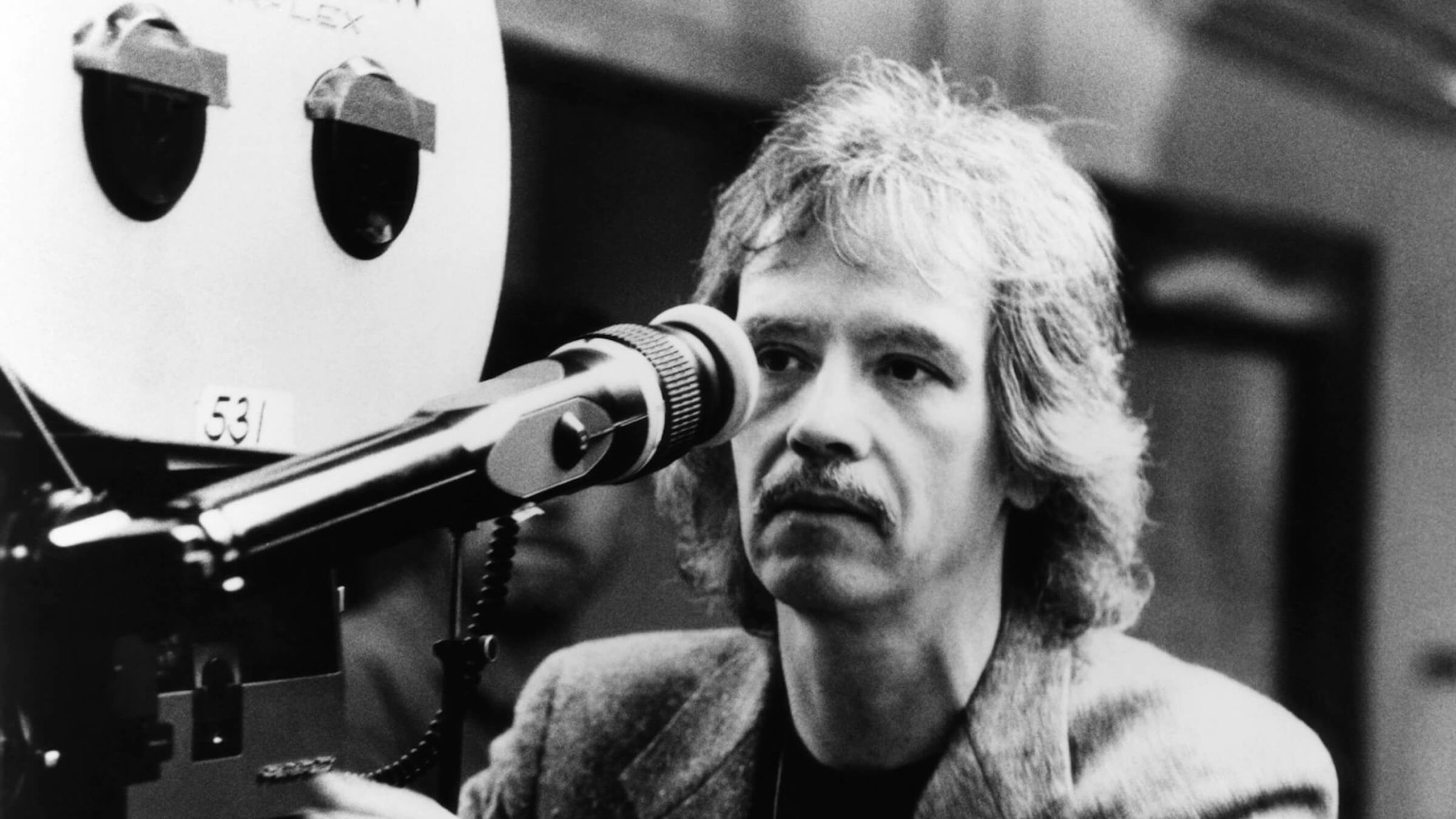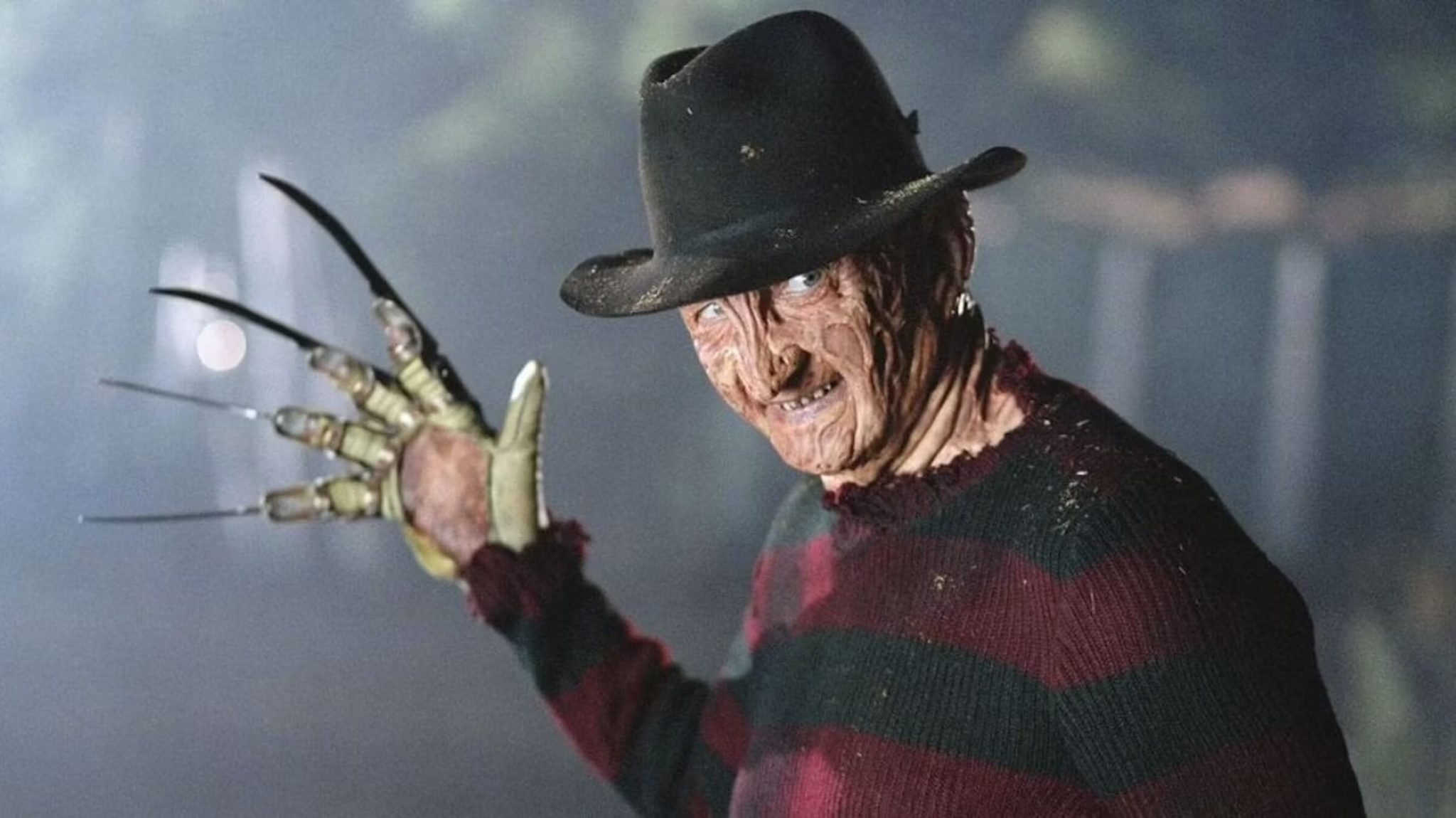Screenwriting Plants and Payoffs: 'A Quiet Place'
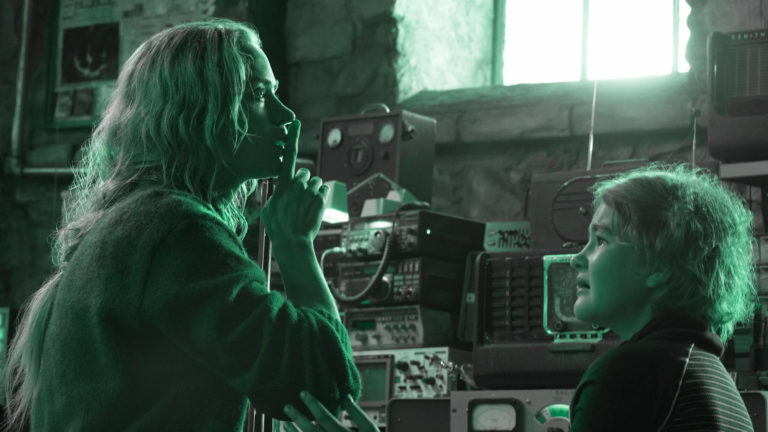
Telling a story in screenplay format from the beginning, middle, to end isn't enough. That's not going to advance you in your screenwriting career.
Each screenplay that you write needs to read like an entertaining and well-constructed cinematic experience. And the best films utilize tools, techniques, devices, and tricks of the trade to accomplish that.
Some of the best techniques you can use are plants and payoffs.
Welcome to our ongoing series — Screenwriting Plants and Payoffs — where we highlight films within multiple genres and break down how they effectively use plants and payoffs.
Before we go into this installment's featured example, let's delve into what plants and payoffs are all about.
What Are Screenwriting Plants and Payoffs?
Plants and Payoffs are techniques in screenwriting that offer added depth and meaning to moments in a story. They help to engage the audience with a more satisfying viewing experience.
The roots of plants and payoffs — also known as Setup/Reveal, Plant/Reveal, Setup/Payoff — stem from foreshadowing, a literary device in which a writer gives an advance hint of what is to come later in the story.
The plant is part of the setup.
The payoff is a reveal (twists, turns, climax).
For screenwriters and filmmakers, it is a tool that not only enhances your scripts but makes the challenge of writing a compelling and engaging screenplay all the more fun — like spreading little Easter Eggs throughout your whole screenplay for readers and audiences to enjoy.
They can be significant, subtle, or add to the style of the writing. They can take a routine action, drama, or suspense sequence and create more memorable moments that audiences will take home with them and discuss in those “water cooler” sessions at work or online. They can set up a weakness in a hero, a scare within a horror flick, a laugh within a comedy, a clue in a mystery, or an answer to the problem within a drama.
And even more important — when written effectively — plants and their payoffs can legitimize the twists, turns, and surprise endings of your screenplays.
Okay, let's discuss this installment's example — A Quiet Place.
The Screenwriting Plants and Payoffs of A Quiet Place
Note: Beware of Spoilers.
A Quiet Place was originally written by college friends Bryan Woods and Scott Beck.
Beck and Woods told IndieWire:
"The origins of A Quiet Place date back to our college years, as we became obsessed with the silent cinema of Charlie Chaplin, F.W. Murnau, Buster Keaton, and Jacques Tati. These filmmakers were masters of visual storytelling, needing not one line of dialogue to communicate character, emotion, or intent. Cinema had never felt so pure. But having been raised on a healthy dose of Alien, Jaws, and dozens of Hitchcock films, we wondered if you could fold the silent visual techniques of the early 20th century into the context of a modern-day genre film. And thus, A Quiet Place was born."
Beck and Woods started the script in January 2016. By that July, John Krasinski read their draft, which appealed to him because of the concept of parents protecting their children. He and his actress wife, Emily Blunt, had just had their second child. Krasinki was looking for a project to direct. Everything came together.
By March 2017, they sold the script to Paramount. Paramount then hired Krasinski to rewrite the script and direct the film. Krasinski's wife was cast as his co-lead.
Now, let's get to the plants and payoffs.
Read More: 'A Quiet Place' Writers Beck & Woods Share 5 Screenwriting Lessons
The Sound of Silence
In the film's first images, we see the importance of silence as the family maneuvers through the deserted town, searching for supplies. We see the news headlines of magazines and newspapers that reveal key details and exposition.
We see the tactics that the characters are forced to utilize to remain as silent as possible to avoid detection from the as-yet-seen threat.
- They walk barefoot.
- They walk on trails of sand.
- They use sign language to communicate.
These elements introduce the concept of the screenplay and plant plot elements that will be paid off later in the story.
When Emily Blunt's character steps ojn a nail, that's a payoff of the introductory images of them needing to be barefoot. It's subtle, yes. But those subtle plants and payoffs are what make a screenplay that much stronger — especially when they are spread out throughout the whole story.
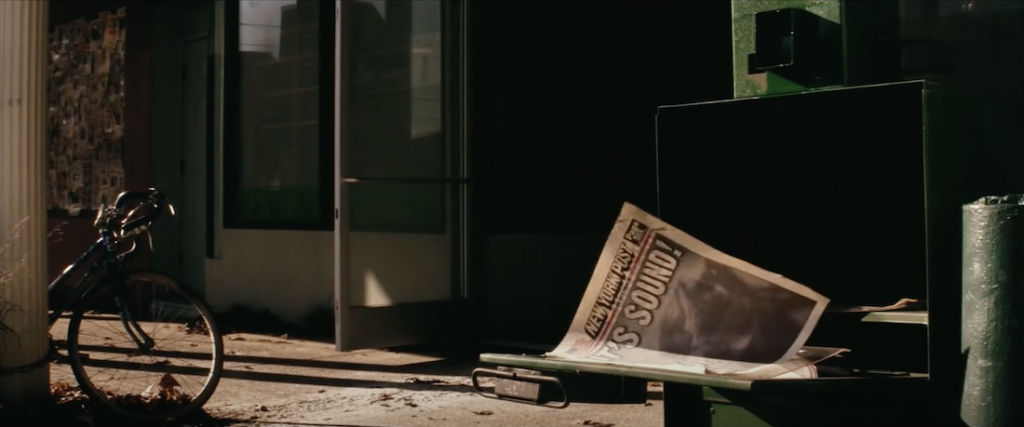
'A Quiet Place'
Youngest Son's Naivete
He's four years old and doesn't understand the threat. He knows that he needs to be quiet, but he doesn't know how to avoid situations that will be dangerous for him and the family. In the opening sequence, we are given subtle plants that will be "paid off" in tragic form.
- The boy loves rockets and says that their escape from the threat could be reached by going into space.
- He finds a space shuttle toy.
- Because he is younger, he is naive to the world. He almost drops the space shuttle toy, which would have made a loud noise.
- He's naive to the technology, picking up the space shuttle toy, which has batteries within.
All of these moments are plants that foreshadow his fate.
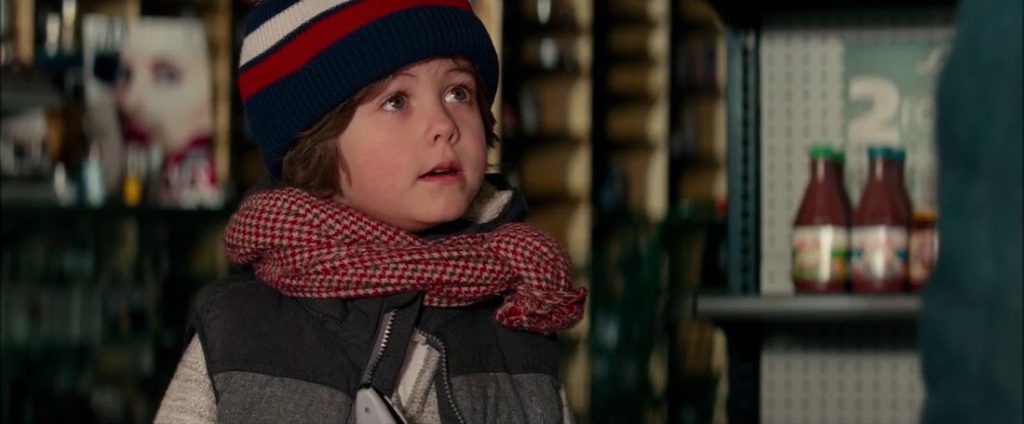
'A Quiet Place'
Anyone Can Die
In the opening sequence, we see the tragic loss of the youngest member of their family. It's set up with those quick plants and a heartbreaking payoff.
The family is hiking home, only to hear the loud sounds of the toy space shuttle that the boy found. Back in the store, the older sister had given him the toy, unbeknownst to the parents. The father had taken the batteries out and left them on the shelf. The little brother grabbed the batteries without anyone seeing him do so.
This visual plant informs us that something bad is about to happen. We couldn't imagine the unthinkable, though. When the sounds of the toy ring out, they look back and see that the boy is far behind.
The father tries to get to him. The other members of the family know that it's too late. They watch in horror as the boy is quickly killed by a creature that reacts to sound only.
This emotional event is also a plant in itself. It tells us that no one is safe. Not one single family member that we've met is off-limits. If they will kill an innocent child, the youngest of the bunch, then anyone is game. This is later paid off in the third act when the father dies an equally tragic death, sacrificing himself for his children.
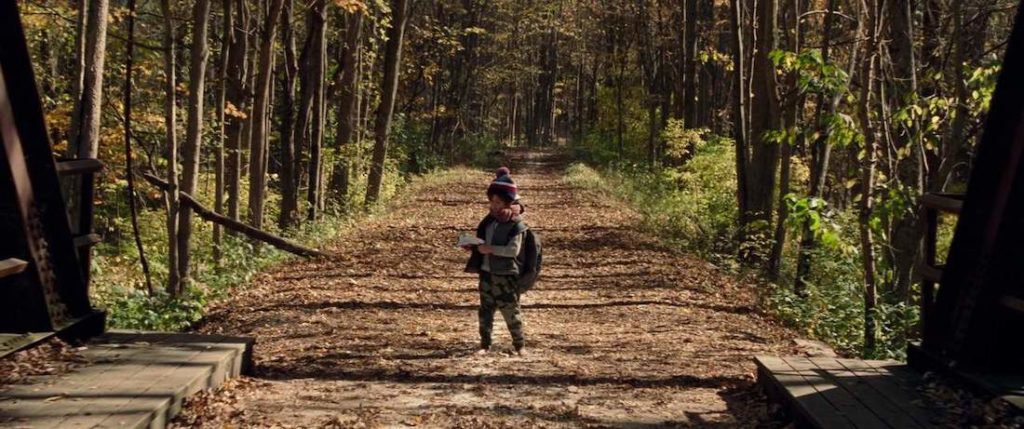
'A Quiet Place'
Father's Clippings and Notes
When we get to their house, we quickly see more newspaper clippings that give us information that pays off later on in the story.
The dry-erase board offers us additional plants as well.
- We learn that the creatures are blind.
- We learn that they have armor.
- We also learn that there are three confirmed creatures in their area.
All of this information pays off by the end.
We also learn that soundproofing is going to come into play at some point. This pays off when they escape into the lower level, and we learn that they're safe (for the time being) there.
The best plant is the question: What is the weakness?
By the end of the film, we learn that the creatures' weakness is a certain frequency that creates audio feedback — it rattles their hearing instruments and brain. And this is brilliantly planted multiple times with the girl's hearing device moments.
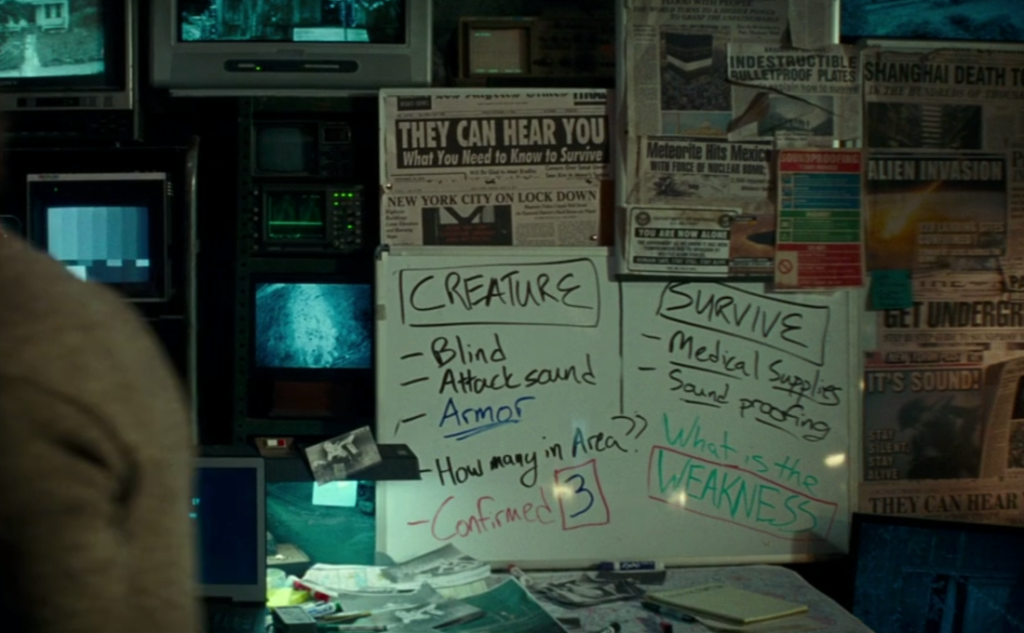
'A Quiet Place'
The Truck
We have a subtle plant with the older surviving son pretending to drive the old truck on their land.
What seems like an imaginative moment of a child pretending is actually a plant that pays off in the film's third act when the father provides the sacrificial distraction that allows the brother and sister to escape by disengaging the vehicle's brake.

'A Quiet Place'
Loud Sounds Hide Small Sounds
The father takes the son to a waterfall. He teaches him that louder sounds can easily hide smaller sounds. The sounds of the fall allow them to scream at the top of their lungs and talk openly without having to use sign language and whispers.
This knowledge is paid off in many ways throughout the rest of the story, with the characters using louder sounds to distract the creatures. We see more of a direct mirror to the waterfall plant when the mother is trapped in the flooding basement with her newborn baby. The sound of the water hides the baby's sounds. She even hides behind a small waterfall underneath the stares to further conceal the baby's sounds.
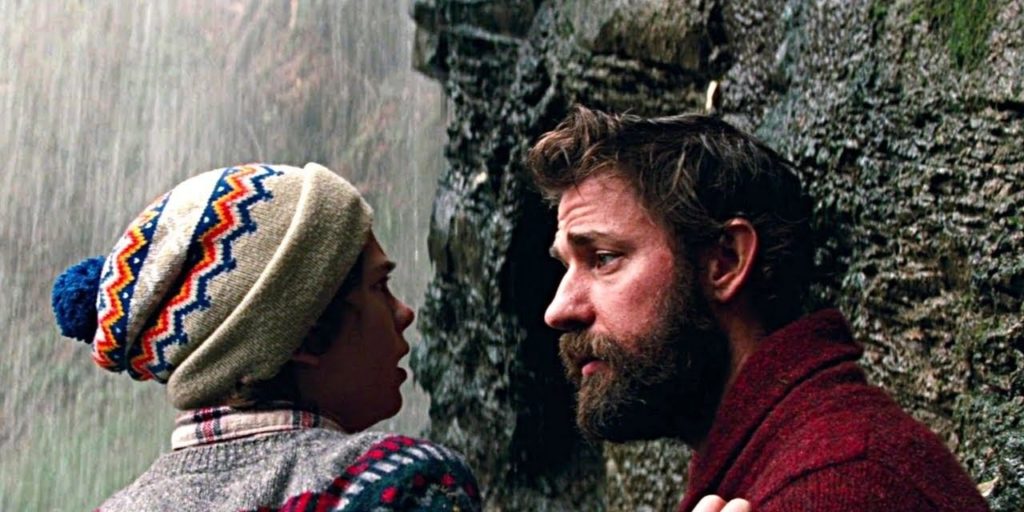
'A Quiet Place'
The Nail
As the mother brings up supplies from the basement, we see her bag snag on a bent nail on one of the wooden steps. The nail goes straight up, creating a painful situation paid off after she goes into labor and tries to escape the creature in their house.
Another subtle plant and payoff — one of many throughout the screenplay.
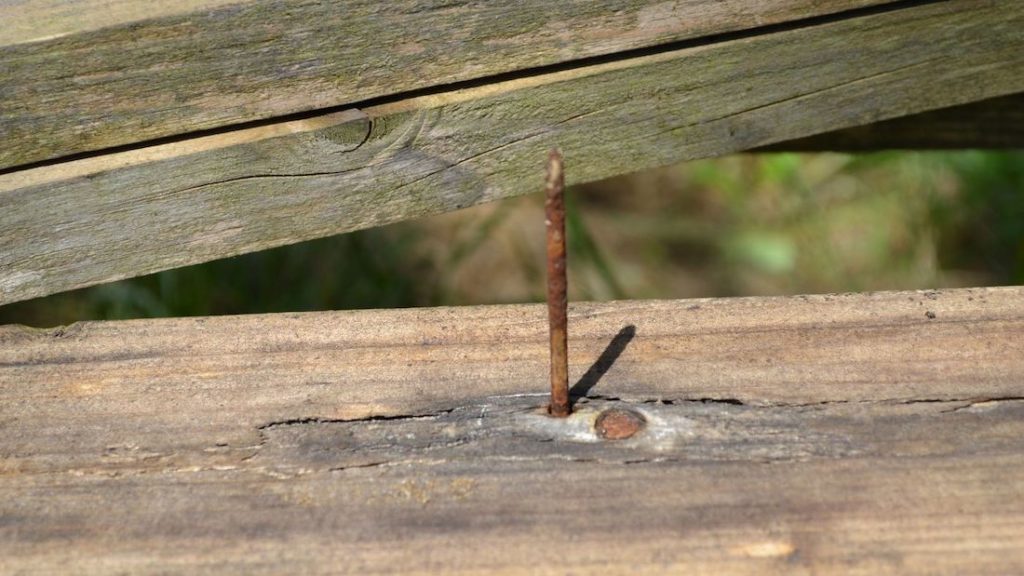
'A Quiet Place'
How to Develop Plants and Payoffs in Your Screenplays
The concept behind using plants and payoffs is introducing a story point, visual, line of dialogue, character trait, or object early on within the script — usually in subtle fashion — and have that element be eventually revealed as something partial to the end of the story. And the more plants you have throughout the script, the better.
Most professional screenwriters learn and understand one vital element in their screenwriting process — know your ending first. It gives you something to write towards.
Sure, there's some leeway. You, the screenwriter, can and should discover where your characters take you. But knowing at least a general ending to your story is so important.
The end of the script is your compass. It will tell you where you are veering off course. It will tell you when you're headed in the right direction.
When you know your ending, you can enjoy the process of peppering your script with plants and payoffs.
- You can create plants as you write.
- You can create even more plants during the rewrite process.
- You can create multiple payoffs throughout your script and plant subtle clues, imagery, lines of dialogue, and moments ahead of them.
Ken Miyamoto has worked in the film industry for nearly two decades, most notably as a studio liaison for Sony Studios and then as a script reader and story analyst for Sony Pictures.
He has many studio meetings under his belt as a produced screenwriter, meeting with the likes of Sony, Dreamworks, Universal, Disney, Warner Brothers, as well as many production and management companies. He has had a previous development deal with Lionsgate, as well as multiple writing assignments, including the produced miniseries Blackout, starring Anne Heche, Sean Patrick Flanery, Billy Zane, James Brolin, Haylie Duff, Brian Bloom, Eric La Salle, and Bruce Boxleitner, and the feature thriller Hunter’s Creed starring Duane “Dog the Bounty Hunter” Chapman, Wesley Truman Daniel, Mickey O’Sullivan, John Victor Allen, and James Errico. Follow Ken on Twitter @KenMovies
Get Our Screenwriting Newsletter!
Get weekly writing inspiration delivered to your inbox - including industry news, popular articles, and more!



